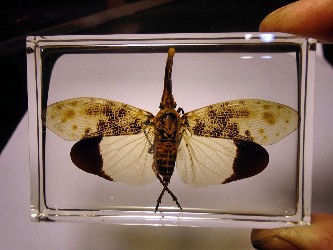
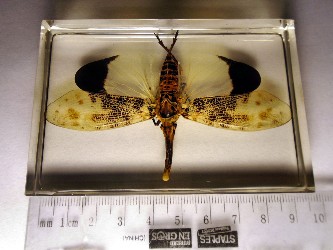
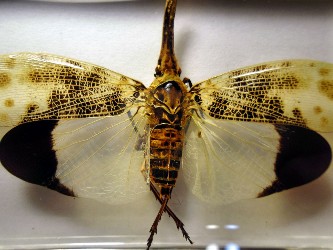
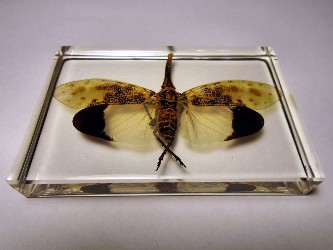
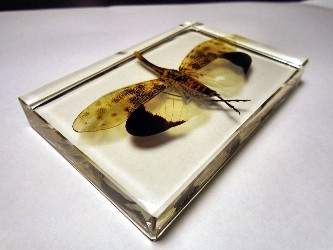
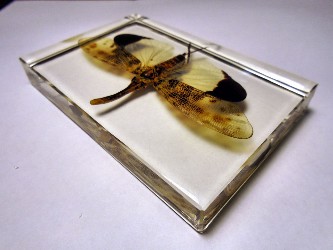
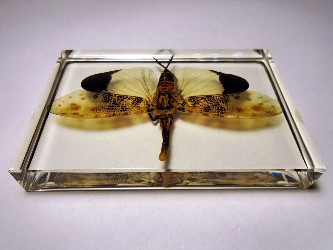
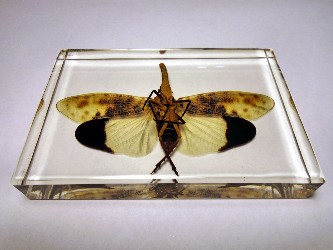
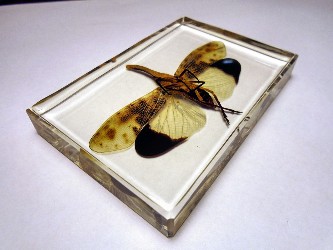
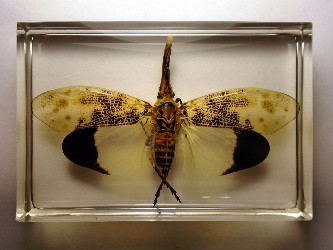
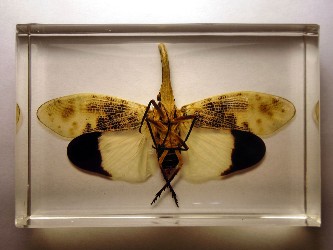
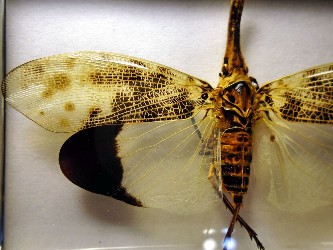
 |
 |
 |
 |
 |
 |
 |
 |
 |
 |
 |
 |
|
Making sense of Fulgoroidea  CLICK FOR DOWNLOAD --------------------------------- Classification Phylum Arthropoda Class Insecta Order Hemiptera Family Fulgoridae Genus Pyrops Species Pyrops Astarte White
.............................. RECORDS OF THE LANTERN BUG IN SINGAPOUR
CLICK FOR DOWNLOAD |
FULGORIDAE LANTERNFLY
Fulgoridae (aka, the lanternflies), and their closest relatives, Dictyopharidae, are two of 20 insect families that are included in the hemipteran superfamily Fulgoroidea (commonly referred to as “planthoppers”). Collectively, planthoppers are a diverse insect group including 9,000 described species, all of which are sap-feeding herbivores. Different researchers have proposed alternative hypotheses regarding how many planthopper families there are and how those families are related. The phylogeny shown here is based on the results of a molecular phylogenetic analysis of Fulgoroidea. These results support the recognition of at least 19 planthopper families (but note that exemplars of Hypochthonellidae and Gengidae were unavailable for that study). Relationships among some families are depicted here as unresolved because different phylogenetic reconstruction methods produced conflicting results we plan to further explore the evolution of the planthopper superfamily in an expanded analysis including more taxa and more data.
These molecular data-based results support the previous hypotheses proposed by Asche and Wilson et al. The most ancient planthopper families (Cixiidae and Delphacidae) have ovipositors shaped for piercing and sawing vegetation, and insert eggs into the tissues of monocots or in debris at the base of the host plant. The families of intermediate divergence age (Kinnaridae, Meenoplidae, Derbidae, Achilidae, Achilixiidae, Fulgoridae, and Dictyopharidae) have spade-like ovipositors for burying or covering eggs with soil or wax on monocot or dicot host plants. The most recently diverged families have piercing-excavating ovipositors used to excavate the woody tissue of dicot hosts for egg laying.
Fulgorid planthoppers (often called lanternflies) are typically arboreal, most often associated with large tropical trees. Fulgoridae is the only family in this intermediate group that deposits eggs higher up on the host plant and covers them with a waxy substance. Fulgoridae are also unique among the planthoppers in that many species are large-bodied (as long as 95 mm), have pigmented, often brightly colored wings, and some produce cuticular waxes in a variety of forms, including plumes that extend well beyond the length of the abdomen. Although at least 10 other planthopper families have elongate head processes, many species of Fulgoridae exhibit comparatively exaggerated morphological diversity in head shape, such as the peanut-headed bug and the dragon-headed bug (Phrictus quinquepartitus). The 550 species of Fulgoridae are primarily distributed throughout the world’s tropical and subtropical regions, with only 17 species recorded from the Nearctic region, and no species recorded from the Palearctic .
A planthopper is any insect in the infraorder Fulgoromorpha, exceeding 12,500 described species worldwide. The name comes from their remarkable resemblance to leaves and other plants of their environment and from the fact that they often "hop" for quick transportation in a similar way to that of grasshoppers. However, planthoppers generally walk very slowly so as not to attract attention. Distributed worldwide, all members of this group are plant-feeders, though surprisingly few are considered pests. The infraorder contains only a single superfamily, Fulgoroidea. Fulgoroids are most reliably distinguished from the other Auchenorrhyncha by two features; the bifurcate anal vein in the forewing, and the thickened, three-segmented antennae, with a generally round or egg-shaped second segment that bears a fine filamentous arista.
Nymphs of many fulgoroids produce wax from special glands on the abdominal terga and other parts of the body. These are hydrophobic and help conceal the insects. Adult females of many families also produce wax which may be used to protect eggs.
Fulgoroid nymphs also possess a biological gear mechanism at the base of the hind legs, which keeps the legs in synchrony when the insects jump; the gears are not present in the adults, and were known for decades before the function of the gears was only recently discovered.
|